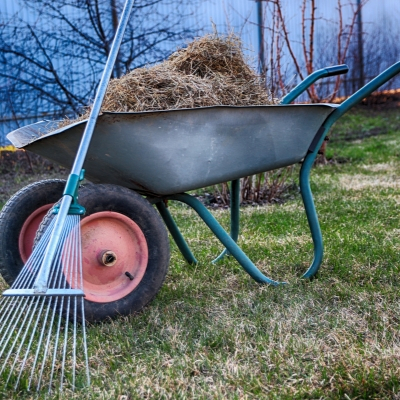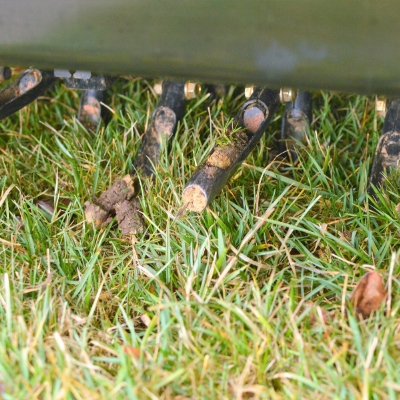Posted on May 7th, 2019
Thatch is an intermingled blend of dead grass stems, shoots, and roots, which gather between the soil and the grass, causing an abundance of problems. For example, thatch makes it difficult for important nutrients like air, water, and fertilizer to penetrate your grass’ root systems, which in turn affects growth. So how do you deal with thatch?
Here is a guide to spring thatch control and a few ways you can eliminate and prevent thatch. this will ultimately provide your lawn with the nutrients it needs to thrive this growing season.

The most effective way to control thatch this spring is to dethatch. The first step in dethatching your lawn is mowing it to its normal height. This will allow you to reach the thatch easily with the rake. Then, you will want to wait for a day when it is cool and the grass is moderately moist. This will soften the thatch, making it easier to pull from the soil.
The amount of thatch sitting between the grass and soil will determine whether or not you can dethatch with a normal rake, or if you will need to rent a dethatching rake. If you use a regular rake, you will want to make sure you can see and feel the thatch being pulled from the soil. If you’re using a dethatching rake, it will dig into the thatch and you will want to be sure the only thing you’re pulling from the soil is thatch, and not grass roots.

Another effective way of controlling thatch is through core aeration. Core aeration is the process of removing plugs of soil from your lawn and depositing them on top of your grass where they break down. Not only does core aeration remove thatch, but it also alleviates soil compaction. This results in those essential nutrients getting deposited directly into the soil, and into your grass’ root systems.
While the direct purpose of core aeration is not thatch removal, it still aids significantly in that area. Core aeration helps the rooting occur in the soil, as opposed to on top of the soil, which results in thatch accumulation. Also, the plugs of soil that decompose back into the grass will help with thatch decomposition, along with providing other benefits as well.
Controlling and preventing thatch is all about smart, proper lawn care. For example, if you apply too much “quick-release” fertilizer, or if you water your lawn too much, it can result in excessive growth, which ultimately results in future thatch buildup. Maybe you’ve heard that leaving lawn clippings behind after mowing is good for your lawn… This isn’t entirely true. While the clippings do decompose and add nutrients to the soil, clippings 2-3 inches long can smother the grass, resulting in the buildup of thatch.
Proper mowing, regulated watering, consistent raking, and regular aeration (once or twice a year) are all good lawn care methods to prevent thatch buildup. Slow-release fertilizers are also an effective way of providing your lawn with timely nutrients while preventing the buildup of thatch.
Don’t let thatch get the best of your lawn! Contact the experts in thatch control at Turf Unlimited to hear about our lawn care programs, and how we can help you control and prevent thatch from damaging your lawn this spring.
Contact us here or give us a call at (888) 649-9919 for a free estimate. Protect your lawn and contact us today!